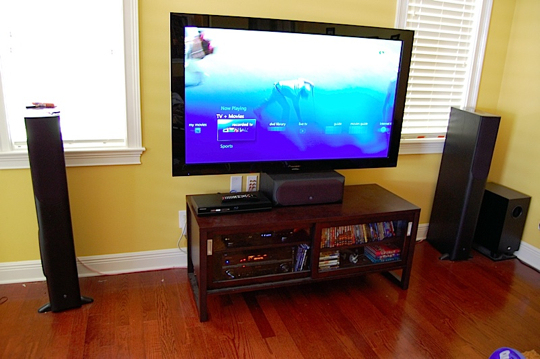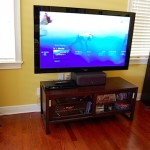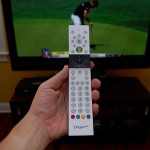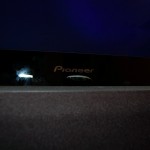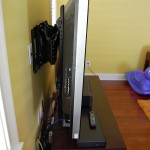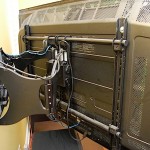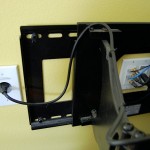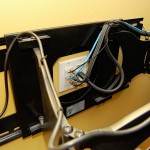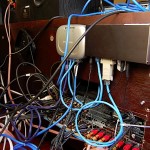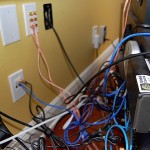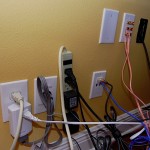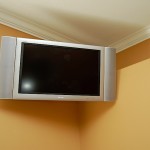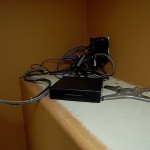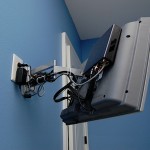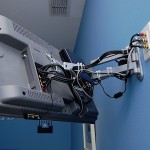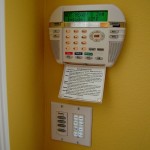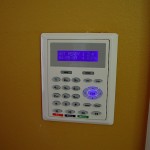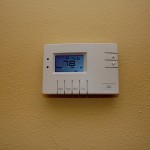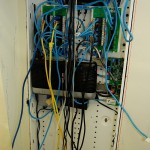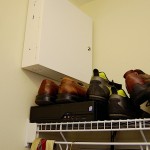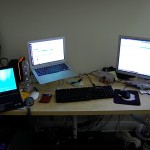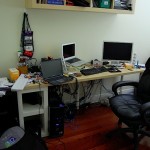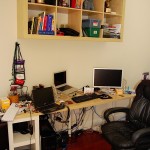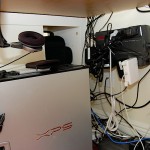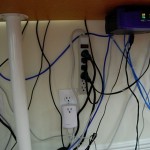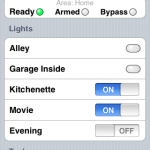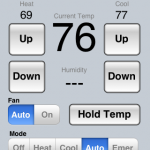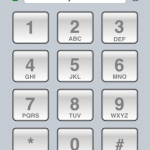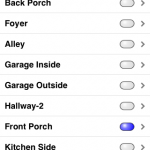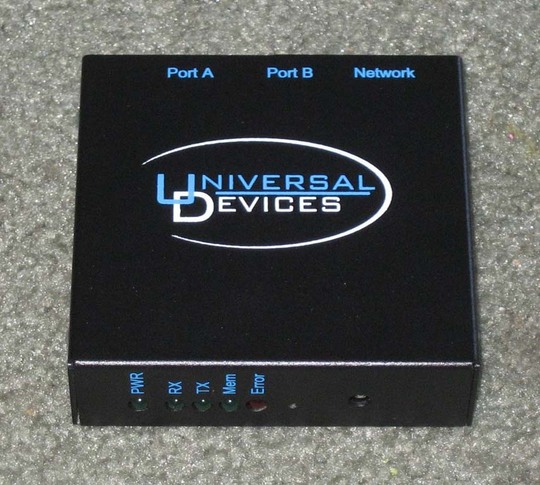Have you ever thought about getting into Home Automation, but you just aren’t sure where to start? Well you can start where I did with the great advice and knowledge of my friend Dave “Utah” Evans because he’s brought all he has to offer to the web in the way of a new blog called HARoundup.com. One of the best things about Home Automation Roundup is all the news and tips are from Utah’s perspective which is just like most of us; a computer nerd that likes gadgets and isn’t a part of the elitist Home Automation industry. So in other words he’s on a similar budget with similar expectations. I’ve waited to post this until he had a full month of blogging under his belt, so do me a favor and help me welcome him to the blogosphere my adding his RSS feed to your reader and leaving a comment on the site.
Archive for the ‘Home Automation’ Category
Introducing Home Automation Roundup
Tuesday, October 6th, 2009How to control Windows 7 via TCP with vmcController
Sunday, April 26th, 2009The Windows 7 release candidate (rc) hit the torrents this week and after it was confirmed authenticate by someone via an MD5 hash, I decided to go ahead and try and make the switch full time from Vista.
One of the key add-ins in my household is one that adds the ability to control Media Center and extenders via my Home Automation controller since even the basic operations in my home are dependent on it. I can’t even watch Live TV in my house if this doesn’t work, so I needed a solution. Autonomic homes has supported Windows 7 since beta, but I’m not willing to pay $800 just for this one feature, so I needed the open source project that was free to work, the same one that I was using with Vista.
The now poorly named VMCController is a background MC add-in that features a few control ports so I can fully control any extender in my house via TCP. To get it working on Windows 7, I had to download and install the latest version as normal, but when I launched MC, I got an error about the add-in failing to load. So with some help from Olddog at the projects codeplex discussion page, I was able to get it working. You’ll need to download Olddog’s updated DLLs. But in order to replace the DLLs, first thing you need to do is to delete the HKEY_LOCAL_MACHINE\Software\Classes\Installer\Assemblies\Global\Default registry key as per this MS KB article — always backup the registry before editing by righting clicking on the parent object and choosing export. Now reboot and open Windows Explorer to C:\Windows\Assembly. Find VmcController.Add-In, then right click on it and select uninstall. Now copy the new VmcController.Add-In.dll from the OldDog’s zip file to C:\Windows\eHome and all the DLLs to C:\program files\Media Center Network Controller\ and finally start Media Center and test by telneting to localhost port 40500.
The only problem I’m having is that a few of the buttons don’t work, but I found work arounds. So instead of using button-skipfwd I used the command playrate skipforward, which does the same thing.
Hopefully the main contributer to the project will update the source with OldDog’s changes so that we can just run the installer like the old days, but at least it is working.
My electronics in pictures
Sunday, April 5th, 2009One of the commenters on the Engadget HD Podcast recently asked me to do this so here goes. It’s been over two years since I did a post like this and I have to say I’m amazed at how much of my equipment is the same and at the same time, how much is different.
My equipment list
- Pioneer PDP-6010FD (Kuro)
- Saphire towers and center
- Speakercraft surrounds
- XPS 420 running Vista Media Center
- LG BD300 Blu-ray player
- HDHomeRun
- Xbox 360
- Pioneer Elite VSX-91TX AV receiver
- 32″ Sharp Aquas — Linksys DMA2100
- 19″ Sharp Aquas — Linksys DMA2100
- OrigenAE rc197 Remotes in each room
- Elk M1-Gold alarm
- Global Cache GC-100
- MSI Wind PC running WHS
- Insteon Dimmers (about 14)
- ISY-99 Insteon Controller
- HAI thermostat
- MacBook Air
- Latitude D430
- 20″ cinema Display
- Actiontec MI424-WR FiOS WiFi router
My favorite new iPhone app, eKeypad Plus
Sunday, March 15th, 2009Although there wasn’t much HD news at EHX this year, I did have some time to stop by and talk to some of my favorite home automation vendors. And at the Elk booth I learned about a really cool new way to control my home.
eKeypad Plus isn’t the best name for a home automation application and the $45 cost and icon might scare you off before you even get started, but it really cool. The application ties into an Elk security system — which is also a damn fine home automation controller — and gives me the type of access I’ve been waiting for. Even my wife was impressed and it when it comes to iPhone apps, we don’t see eye to eye on most.
The key features I’m pleased with are the ability to check the status of the alarm from anywhere (armed etc), the ability to adjust the thermostat and I love being able to turn lights on and off without getting off the couch.
Overall I don’t have any complaints — although $45 is the most I’ve ever paid for an iPhone app and I’m still not sure it is a good value — but there are a few tweaks it could have like when you click thermostat it shows the lists of thermostats in the house, even though I only have one. It also be nice if there was a way to view the Elk’s logs so I could go back and look at previous events — evidently on the roadmap for the pro version.
Anyways, if you have an Elk there’s no reason to wait, just go buy it you won’t be sorry. (I should point out that the Elk Ethernet expansion module is required for this to work.)
How to reliably control the Xbox 360 with discrete IR codes
Tuesday, February 10th, 2009Anyone who’s tried to control an Xbox 360 with a programmable remote or home automation system probably know how hard it is. I mean, I’ve been playing with this stuff for about six years and never in my life have I seen a device act so odd. The two main things I noticed was that sometimes it won’t respond to any codes at all until some obscure button is pressed. But the worst is that Microsoft doesn’t provide discrete IR codes and the ones that can be found online aren’t really discrete. What I mean to say is that the discrete ‘on’ works to turn the system on until you either turn the 360 off with the remote or the button on the front, and then from that point forward it is a discrete ‘off’ code. Which really defeats the entire point of having discrete IR codes.
Well luckily, I was persistent and after lots of reading online I found the solution. I found this post on Remote Central and to my surprise it actually works. What you do is create two macros, one for on and another of off, using two separate commands each. Here are pronto hex codes.
Power On Macro
(#a)
0000 0072 0000 0021 0062 0020 000F 000F 000F 000F 000F 0020 000F 0020 002F 0020 000F 000F 000F 000F 000F 000F 000F 000F 000F 000F 000F 000F 000F 000F 000F 000F 000F 000F 000F 000F 0020 000F 000F 000F 000F 000F 000F 0020 0020 000F 000F 000F 000F 0020 0020 0020 000F 000F 000F 000F 000F 000F 000F 000F 0020 000F 000F 000F 000F 0020 000F 000F 000F 0981
(Power On)
0000 0073 0000 0020 0060 0020 0010 0010 0010 0010 0010 0020 0010 0020 0031 0020 0010 0010 0010 0010 0010 0010 0010 0010 0010 0010 0010 0010 0010 0010 0010 0010 0010 0010 0010 0010 0020 0010 0010 0010 0010 0010 0010 0010 0010 0010 0010 0010 0010 0010 0010 0020 0020 0020 0010 0010 0010 0010 0010 0010 0020 0020 0020 0020 0020 0020 0010 09C1
Here are the two commands to issue for off.
Power Off Macro
(#b)
0000 0072 0022 0022 0062 0020 000F 000F 000F 000F 000F 0020 000F 0020 002F 0020 000F 000F 000F 000F 000F 000F 000F 000F 000F 000F 000F 000F 000F 000F 000F 000F 000F 000F 000F 000F 0020 000F 000F 000F 000F 000F 000F 000F 000F 000F 000F 000F 000F 000F 000F 0020 0020 0020 000F 000F 000F 000F 000F 000F 000F 000F 0020 000F 000F 000F 000F 0020 000F 000F 000F 0981 0062 0020 000F 000F 000F 000F 000F 0020 000F 0020 002F 0020 000F 000F 000F 000F 000F 000F 000F 000F 000F 000F 000F 000F 000F 000F 000F 000F 000F 000F 000F 000F 0020 000F 000F 000F 000F 000F 000F 0012 000F 000F 000F 000F 000F 000F 000F 0020 0020 0020 000F 000F 000F 000F 000F 000F 000F 000F 0020 000F 000F 000F 000F 0020 000F 000F 000F 0981
(Power Off)
0000 0073 0000 001F 0060 0020 0010 0010 0010 0010 0010 0020 0010 0020 0031 0020 0010 0010 0010 0010 0010 0010 0010 0010 0010 0010 0010 0010 0010 0010 0010 0010 0010 0010 0010 0010 0020 0010 0010 0010 0010 0010 0010 0020 0020 0010 0010 0010 0010 0020 0020 0020 0010 0010 0010 0010 0010 0010 0020 0020 0020 0020 0010 0010 0020 09D1
Now to my surprise these not only turn the 360 on and off reliably, but to top it off, it responds correctly to the other IR commands without any other funny business.
I don’t know how estech from the Remote Central forums figured this out, but I’d really like to thank him for saving me some hair — now if only my new fans from ConsoleShop.com would get here.
Windows Home Server Rocks!
Wednesday, January 14th, 2009It’s no secret that I’m a Mac lovin’ Windows hater, but man things are really turning around at Redmond as earlier this year I switched from TiVo to Vista Media Center and now this week I deployed my first Windows Home Server.
As a computer network profesional the idea of having a server at home has always apeal to me, but for many reasons I never persued it. But when I started to receive memory errors on the last XP box in my house that I use as a Home Automation controller, I once again considered running a server. I was delighted to learn that Windows Home Server is really just Windows Server 2003 with a few really cool utilities for the home and a resonable price. So not only could I run Mainlobby on the box, but I could also use it to backup and remotely access my Media Center and my wife’s Vaio laptop — no I still haven’t converted her.
For hardware I went with a MSI Wind PC from Newegg — thanks Warren, for the suggestion — which sells for an unbelievably low $139. To this I added a $21 2GB stick of ram and the original 250GB SATA HDD from the Series3 I sold to Tyler that was lying around. Add in another $94 for an OEM copy of WHS and I got myself a whole lot of utility for $254. To top it off, the small box will fit in my structured wiring cabinet which fits nicely into my plans to reclaim my closet from my electronics — more about that to come.
I was able to install WHS and all the agents on my two Windows computers in no time, and already feel better that the machines are being backed up. The only problem I have is that I can’t use the remote desktop application at work because port 4125 is blocked — man do I wish I could tunnel this over ssl — and I haven’t quite figured out how to get Time Machine to backup to a network drive — yes I tried iTimemachine. The most impressive thing so far though is the included dynamic DNS feature and the free trusted SSL certificate.
I’m not 100 percent migrated over from my old XP box yet, but I’m getting there. Hopefully this weekend I’ll have a chance to decommishion the old box once I get ML tested. Stay tunned.
The TV Pack has made my Media Center enviroment very unstable
Wednesday, November 12th, 2008I know, I know, it isn’t meant for consumer consumption, but I’d content that it isn’t ready for any consumption. I’ve been told by many beta testers that it is so buggy none of them use it, and now after about 90 days of it being in the wild, it seems that just about everyone at the The Green Button has also given up. Evidently I’m the only idiot still using it, but a day doesn’t go by when I don’t think about going back. Honestly if I didn’t love the hetero’ tuners feature so much I’d have gone back a long time ago. At this point I’m thinking Windows 7 pre-beta is more stable, so maybe I’ll try that. Either way, here is the list of problems I’m having.
- It crashes all the time! How much you ask? Well, luckily Vista makes it easy to go and see how often an app crashes. All in all, in the past 60 days, I’ve experienced about 58 crashes. Of that, Media Center (ehshell.exe) has crashed 20 times, the host module 9 times, store update 27 times, and finally the receiver service twice.
- I’ve have to unplug my extender in my one room about every other week because it is locked up.
- My Extenders report network issues, but I have the same network as I did before I installed the TV Pack, yet it never had problems before. Not to mention the network test always says I have 100% of what I need to do HD.
- I’ve missed a few recordings, to which the Media Center says were “canceled by another component.”
- I’ve had to reconfigure the EPG four times, which takes over an hour to re-enter my 70+ series recordings, not to mention remap all my channels.
- Experienced the mysterious blue bar, about 4 times.
And this doesn’t even take into account the weird bugs like the info and mini guide bug, the scrub bar and worst of all the Media center has to change the channel to record even though there is another tuner that is idle. There are more documented at The Green Button, but I personally havent’ seen them.
At this point I’m convinced that I’m the only one left using the TV Pack and that the Nievies and S1 Digitals of the world are smart enough to skip it until Windows 7.
I was on The Media Center Show
Thursday, July 31st, 2008Now that I’m a full blown Vista Media Center fanboy, it’s no surprised that I was able to finagle my way onto The Media Center Show. Ian and I recorded this about a month ago and it was a blast. We didn’t talk that much HD, mostly it was Home Automation (my new girlfriend) and why I switched from TiVo. Have a listen, if you don’t mind listening to me ramble on for an hour.
The ISY-99 is the best thing that ever happend to my automated lights
Tuesday, May 13th, 2008About two years ago I moved into a new house and discovered that when I park in my detached garage at night, I can’t see where I’m going because the light switch is in the house and I’m in the garage. So I thought, wouldn’t it be cool if when my garage door opened that my alley, garage, and porch lights turned on for a few minutes so I could see where I was walking. Two years later and now I have about 16 automated switches in my house, but unfortunately it came with lots of headaches. The problem is that I choose to use Insteon Lights from Smart Home and although they feature some very advanced grouping configurations, there was no easy way for me to configure it. I tried a few open source projects, as well as three Insteon plug-ins from my current Home Automation controller provider Main Lobby; and I even tried Smart Home’s software HouseLinc. Upon evaluating mControl and discovering it couldn’t master Insteon either, I was telling my new friend Ted Singh from Embedded Automation that I was thinking about ditching Insteon altogether — and the over $1000 I had invested — for something that actually worked. Ted recommended that before I do, that I try out a device from Universal Devices called the ISY-99i. Basically it is a small embedded Insteon controller — they have plans to support UPB and Z-Wave as well — that has a very useful management utility. At first I was reluctant because of the cost. The ISY device I was interested in was $339 and also required me to buy a Ethernet adapter for my Elk M1 Gold alarm system for about $200. So while I was trying to figure out if it was worth another $540 to make my over $1000 investment actually work — more if you include the cost of the Elk — I added up how much it would cost me to switch to Leviton’s Vizia RF and as you might have guessed, it was way too much.
Over the weekend I installed the ELK M1EXP and let me tell you, I should’ve of waited so long, the Ethernet interface is so much better than the serial I was using and well worth the $200 on it’s own. But the real magic happened last night when I received the ISY-99i. In about 4 hours, I achieved lighting bliss and created groups that I’ve fought with for 2 years and never accomplished. The device is an absolute joy to use and besides a few hiccups that UDI’s support was quick to respond to, I couldn’t hardly go to sleep last night because I was so excited about what I’d accomplished — yes, I’m that much of a geek. You have no idea how many hours of heartache I have invested in trying to get even the simplest group created and the ISY can do it in minutes and perfectly every time. Smart Home should bundle this with every Insteon PLM as it makes their hardware an unbelievable solution.
Now for the only problem. As great as the ISY device is, it isn’t very useful if I can’t integrate it with the rest of my system. It integrates pretty well with my Elk, which is my number one priority, but it also needs to integrate with my controller and since Cinemar makes their own plug-in for Insteon — you remember, the one that doesn’t work — I’m not sure I’ll get much help from them. Luckily their architecture is pretty open and my friend Dave has written a few plug-ins already, so with a little help and a little research of the UDI WSDK, I should be in business.
mControl 2.1, so close, yet so far away
Friday, May 2nd, 2008One of the main reasons I started to get into home automation was so I could create lighting scenes. For example, when my garage door opens and it’s dark outside, I have 4 lights turn on for 5 minutes. My garage is detached and the light switch to light the way into the house is in the house. This was not a good design on my builders part, but I’ve overcome it and it’s so handy when it doesn’t work, I hear about it from my wife. Another example is when I’m ready to watch my favorite movie at night. My sconces turn on to 50%, my dinning room light goes to 45%, and my hallway and kitchen lights are turned off. This scene controls about seven devices and would take me a couple of minutes to set without a home automation system.
The problem is when I try to get complicated. You see the garage lights are activated by the controller that is also talking to the alarm and knows if it’s dark outside. The movie scene must know a movie is starting and that it’s late enough my wife won’t be annoyed by the lights turning off in the kitchen. As you can see, a good reliable controller is very important.
I’ve had two controllers so far and haven’t been thrilled with either of them so I’ve tried mControl from time to time. The latest 2.1 is really awesome, it has a very powerful generic device driver that can easily be configured to control any IR, RS-232 or TCP enabled device — in fact I wrote two basic drivers in about an hour once I understood the format of the xml file. The macro builder is powerful and a joy to use — as apposed to Mainlobby which is a total bear. The price is very reasonable at $75. The UI is simple and easy to access from VMC or any web browser enabled device. At this point you have to be wondering, but what Ben, but what? The problem is that mControl can’t activate Insteon lighting scenes and what’s worse if it turns on lights using a semi-workable workaround, my KeypadLincs will be out of sync which means the switch and the light won’t be in the same state — imagine the light is on, but the switch says it’s off. I’m really bummed at this and while Embedded Automation ensures me this will be addressed in Q3 2008, I’m disappointed.
To be fair, I’ve had problems with the my Insteon groups since day one. And since mControl is the third controller I’ve used, and all seem to have some sort of problem with groups, I’m starting to think it may be time to move on. The problem is that I have about $1000 invested in Insteon devices and moving on is not an inexpensive proposition. I don’t suppose any of you are using a better lighting solution?

